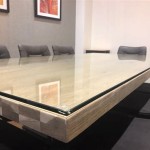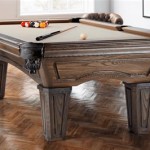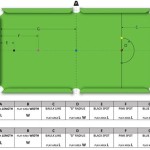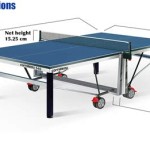Ceramic Grill Table Plans: Elevating Your Outdoor Cooking Experience
Ceramic grills, often recognized by the brand name Big Green Egg, have become increasingly popular among outdoor cooking enthusiasts. These grills are known for their exceptional heat retention, versatility, and ability to deliver consistently excellent results. However, the standalone nature of many ceramic grills often necessitates a dedicated workspace for preparation, serving, and storage. This is where a well-designed ceramic grill table becomes an invaluable addition. Choosing the right ceramic grill table plans is crucial for maximizing the utility and aesthetic appeal of your outdoor cooking area.
A ceramic grill table provides a stable and functional platform for your grill, integrating it seamlessly into your patio or deck. Furthermore, a carefully designed table offers essential features such as counter space for food preparation, storage for grilling accessories, and protection for the grill itself from the elements. Understanding the various design considerations, materials options, and construction techniques involved in building a ceramic grill table is essential for ensuring a successful project. This article outlines key aspects to consider when selecting and implementing ceramic grill table plans, providing a comprehensive guide for creating the ideal outdoor cooking station.
Key Point 1: Design Considerations for Optimal Functionality
The design of a ceramic grill table should prioritize functionality, catering to the specific needs of the user and the dimensions of the ceramic grill. Several key factors should be considered during the planning phase.
Firstly, accurate measurements are paramount. Before embarking on any construction, obtaining precise measurements of your ceramic grill is essential. This includes the diameter of the grill, the height of the base, and any protruding features that need to be accommodated within the table design. The table's opening should be slightly larger than the grill's diameter to allow for easy installation and removal while maintaining a secure fit. Consider the air gap requirements specified by the grill manufacturer for proper ventilation and safe operation. Failure to account for these dimensions can result in a table that is either too small to accommodate the grill or too large, compromising stability and aesthetics.
Secondly, countertop space is a critical consideration. Adequate countertop space is necessary for food preparation, staging ingredients, and placing serving dishes. The amount of countertop space required will depend on your typical grilling activities and the number of people you typically cook for. Many plans incorporate side shelves that can be folded down when not in use, maximizing space efficiency. Think about where you will be preparing food and how much space you need for cutting boards, bowls, and other utensils. Consider installing a shelf specifically for the bottom of the Big Green Egg to give additional stability.
Thirdly, storage needs to be considered. Ceramic grill tables can be designed with various storage options, including cabinets, drawers, and open shelving. Cabinets provide enclosed storage for grilling tools, charcoal, wood chips, and other accessories, protecting them from the elements. Drawers are ideal for smaller items such as thermometers, lighters, and brushes. Open shelving offers easy access to frequently used items. The choice of storage options will depend on your specific needs and the amount of space available. Remember to consider the weight capacity of shelves and drawers, especially when storing heavy items such as bags of charcoal.
Fourthly, mobility is a factor. If you plan to move the grill table frequently, consider incorporating casters into the design. Heavy-duty casters with locking mechanisms will allow you to easily relocate the table while ensuring stability during use. The size and type of casters should be chosen based on the weight of the table and the type of surface it will be rolling on. Larger casters are better suited for uneven surfaces.
Finally, ergonomics plays a role. The height of the table should be comfortable for the user, allowing for extended periods of grilling without strain. A table height of around 36 inches is generally considered a good compromise for most users. If multiple users with varying heights will be using the table, consider a design that allows for adjustable height options. The placement of storage and countertop space should also be ergonomically sound, minimizing unnecessary reaching and bending.
Key Point 2: Material Selection and Durability
The choice of materials for a ceramic grill table is crucial for its durability, weather resistance, and aesthetic appeal. Common material options include wood, metal, and concrete, each offering distinct advantages and disadvantages.
Wood is a popular choice due to its natural beauty, versatility, and ease of working with. However, not all types of wood are suitable for outdoor use. Pressure-treated lumber is a cost-effective option, offering resistance to rot and insect damage. However, it may not be the most aesthetically pleasing choice. Cedar, redwood, and teak are naturally durable hardwoods that are well-suited for outdoor applications. These woods contain natural oils that repel insects and resist moisture damage. However, they are generally more expensive than pressure-treated lumber. Regardless of the type of wood chosen, it is essential to apply a sealant or stain to protect it from the elements and prolong its lifespan.
Metal is another durable option, offering excellent strength and weather resistance. Stainless steel is a popular choice for grill tables due to its resistance to rust and corrosion. However, stainless steel can be expensive and may require specialized welding equipment. Powder-coated steel is a more affordable option, providing a protective coating that resists rust and scratches. However, powder-coated steel can be susceptible to chipping and fading over time. Aluminum is a lightweight and rust-resistant option, but it may not be as strong as steel. When using metal in a grill table design, it is important to consider thermal expansion and contraction, which can cause warping or cracking if not properly addressed.
Concrete offers exceptional durability and a unique aesthetic appeal. Concrete grill tables are heavy and require significant effort to build, but they can withstand extreme weather conditions and provide a stable platform for the grill. Concrete can be stained or sealed to enhance its appearance and protect it from staining. However, concrete can be prone to cracking, especially in areas with significant temperature fluctuations. Proper reinforcement and sealing are essential for preventing cracks and prolonging the lifespan of a concrete grill table. The construction of a concrete table typically requires building a mold and pouring concrete, which can be a challenging task for inexperienced DIYers.
In addition to the main structural materials, consider the materials used for countertop surfaces. Tile, granite, and stainless steel are common options, offering varying degrees of heat resistance, durability, and ease of cleaning. Tile is a versatile and affordable option, but it can be prone to cracking and staining. Granite is a durable and heat-resistant option, but it can be expensive and require specialized tools for cutting and installation. Stainless steel is a hygienic and easy-to-clean option, but it can be prone to scratching and denting.
Ultimately, the choice of materials will depend on your budget, skill level, and aesthetic preferences. It is important to carefully consider the pros and cons of each material before making a decision.
Key Point 3: Construction Techniques and Safety Considerations
Building a ceramic grill table requires careful planning, precise execution, and adherence to safety guidelines. Whether you are building from scratch or modifying an existing table, it is essential to follow proper construction techniques and prioritize safety.
Start with a detailed set of plans. A well-detailed plan will provide step-by-step instructions, material lists, and cutting diagrams, minimizing errors and ensuring a successful project. There are numerous resources available online and in print that offer detailed ceramic grill table plans. Choose a plan that aligns with your skill level and the features you desire. Before starting construction, carefully review the plans and make any necessary adjustments to accommodate your specific grill and needs.
Use appropriate tools and safety equipment. The tools required for building a ceramic grill table will vary depending on the materials and construction techniques used. However, some common tools include a circular saw, drill, sander, measuring tape, level, and safety glasses. When working with power tools, always wear safety glasses and ear protection. Use a dust mask when sanding or cutting wood to prevent inhaling harmful particles. Follow the manufacturer's instructions for all power tools and safety equipment.
Ensure proper ventilation and fire safety. Ceramic grills generate significant heat, which can pose a fire hazard if not properly managed. Ensure that the grill table is placed in a well-ventilated area, away from combustible materials. Consider installing a heat shield or insulation to protect the table from excessive heat. Keep a fire extinguisher nearby in case of emergencies. Never leave a lit grill unattended.
Pay attention to structural integrity. The ceramic grill table must be strong enough to support the weight of the grill and any accessories. Use appropriate fasteners, such as screws and bolts, to ensure a secure connection between all structural components. Reinforce corners and joints to prevent warping or cracking over time. When building with wood, use exterior-grade glue to create a waterproof bond. When building with metal, use welding techniques that are appropriate for the type of metal being used.
Consider professional assistance if needed. If you are not comfortable with any aspect of the construction process, consider seeking professional assistance. A carpenter or contractor can provide valuable expertise and ensure that the table is built safely and correctly. While hiring a professional will add to the overall cost of the project, it can prevent costly mistakes and ensure a high-quality result. When hiring a professional, be sure to check their credentials and references.
Following these construction techniques and safety considerations will help you build a durable, functional, and safe ceramic grill table that will enhance your outdoor cooking experience for years to come.

Diy Do Grill Table

5 Diy Big Green Egg Table Plans To Transform Your Grilling Space

Inexpensive Strong Green Egg Table 4 Steps With S Instructables

Diy Do Grill Table

5 Diy Big Green Egg Table Plans To Transform Your Grilling Space

Diy Do Grill Table

Modern Diy Green Egg Table Detailed Plans And Instructions For This Compact Grill Cart

Build Your Own Big Green Egg Table In A Weekend Seared And Smoked

5 Diy Big Green Egg Table Plans To Transform Your Grilling Space

Grill Cart For Komado Joe Built From 100 Cedar Do Table Plans Wood Diy








